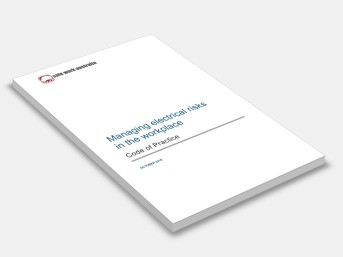Managing electrical risks in the workplace
Safe Work Australia
This Code is intended to be read by a person conducting a business or undertaking (PCBU).
It provides practical guidance to PCBUs on managing electrical risks in the workplace.
It applies to all workplaces where a PCBU:
− has management or control of electrical equipment, including electrical installations, or
− carries out electrical work on or near energised electrical equipment, including electrical installations.
This Code may be a useful reference for other persons interested in the duties under the WHS Act and WHS Regulations.
This Code applies to construction and demolition sites, except if a requirement of the Code is dealt with in AS/NZS 3012:2010:
Electrical installations – Construction and demolition sites. In that case you must comply with AS/NZS 3012:2010. Further information about construction work can be found in the Code of Practice: Construction work.
This Code does not apply to:
− electrical work on extra-low voltage electrical equipment, including extra-low voltage electrical installations
− electrical work on high voltage equipment after switching, isolation, short circuiting and earthing, subject to summary guidance in Chapter 9 of this Code
− the manufacture of electrical equipment
− automotive electrical work
− work that is not electrical work carried out on telephone, communication and data systems
− work carried out by or on behalf of an electricity supply authority on the electrical equipment controlled or operated by the authority to generate, transform, transmit or supply electricity, and
− repair of consumer electrical equipment when unplugged from any electrical socket outlet.
‘Extra-low voltage’ means voltage that does not exceed 50 volts alternating current (50 V a.c.) or 120 volts ripple-free direct current (120 V ripple free d.c.).
Contents:
1: Introduction
2: The Risk Management Process
3: Specific Hazards And Control Measures
4: Working De-energised
5: Isolation, Locking Off And Access
6: Energised Electrical Work
7: Working Near Energised Electrical Parts
8: Tools And Equipment
9: High Voltage Electrical Work
Appendix A: Glossary
Appendix B: Advantages And Disadvantages Of Non-Portable And Portable RCDs
Appendix C: Risks Associated With Electrical Work
Appendix D: Preventative Actions Checklist
Amendments
